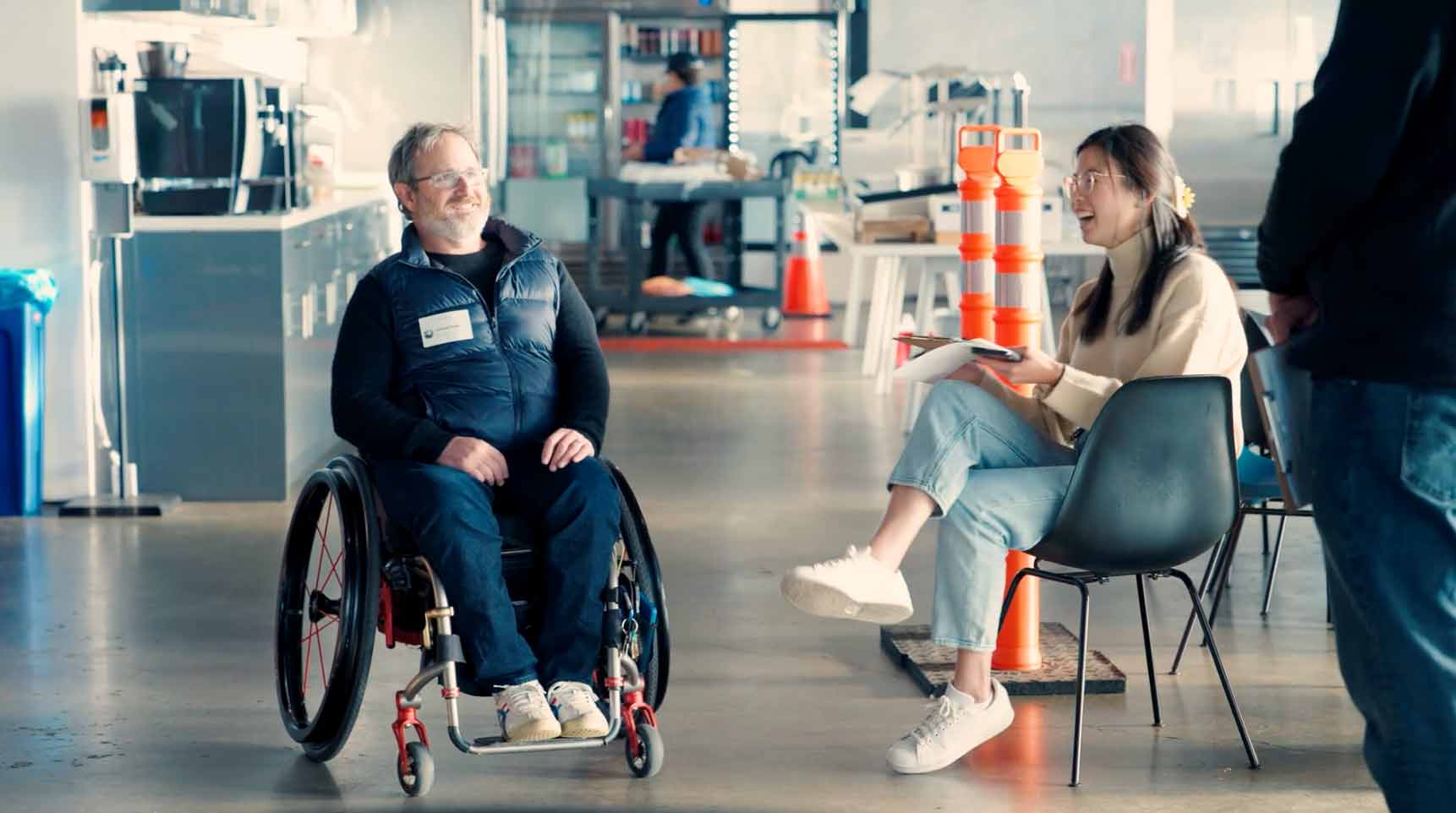Blog Post
3.16.2023
National Disability Institute: Accessible ridehail would boost employment, federal revenue
Share

For the 42.5 million Americans who identify as living with a disability, transportation access is far from a given. For many, it can be prohibitive to workforce participation, access to critical services, and connecting with the people and things they love. For decades, attempts to expand transportation options for those with a disability have remained persistently unreliable and expensive.
We know how this impacts the daily lives of people with disabilities, including my own. As a power wheelchair user, who has the privilege of a job and income, I struggle with even getting around town. I’ve been refused rides, experienced long waits, and constantly face the reality that there are no drivers or vehicles available for me when I need it the most. As a result, I am often stranded and frustrated. It’s an unacceptable status quo that motivates our work at Cruise to build a better, more accessible product for our riders. That’s why we are developing the Origin Mobility –– the world’s first purpose-built, wheelchair-accessible autonomous vehicle. Engaging with the disability community throughout the design and development process helps inform our work –– we have held five studies so far to test the accessible user experience and added a dozen accessibility features to our service last year.
But until now, studies on the cumulative impact of this transportation gap on employment and the U.S. economy, or how a solution like accessible, self-driving technology could play a role in closing it, have been scant.
We’re proud to have partnered with National Disability Institute (NDI) to conduct this first-of-its kind study, released today. According to NDI’s report, an accessible and widely available autonomous ridehail service could have a profound benefit. Such a service would:
Bring 9.15 million Americans into the workforce. This includes 4.41 million direct jobs for Americans with a disability, 1.93 million indirect jobs to support this new employment, and 2.81 million induced jobs to support the increased consumer spending from this combined employment.
Save the federal government $120.7 billion. In year 0 of the model, projected increased employment would generate $92.96 billion in annual federal tax revenue, from new personal income tax, social security tax, excise tax, and customs duties, a 1.8% increase in total federal revenue. Additionally, it would reduce federal spending by $27.8 billion, including reductions in spending from SSI and SSDI programs due to increased wages for people with disabilities.
Grow U.S. GDP by $867.7 billion. This is a roughly 3.8% increase for the U.S. economy based on 2021 national economic output.The study reached these conclusions by exploring the prevalence of transportation barriers for various types of disabilities, their associated labor force participation rates in the economy, and estimated job creation potential and federal tax savings that accessible Level 4+ autonomous vehicles could generate if made available to these Americans.
This massive opportunity is clear when considering just how high a barrier transportation creates for the disability community: unemployment for people with disabilities was double (10%) the rate for those without (5%) in 2021, and just 21% of Americans with disabilities participated in the labor force, significantly below the 67% for those without disabilities.
As part of their unique study, NDI convened a series of interviews that bring this reality to life:
An employer who described transportation as a “nightmare” for their program employing people with intellectual and developmental disabilities: “I feel like I’ve been able to overcome every other challenge in this space except this one.”
A small business owner who must rely on friends and family, and often expensive rideshare, hindering the growth of their business: “There are times where I don’t even make a profit because Uber eats it all up.”
The all-too-common experience of being refused service: “Now, I was standing there in not the greatest area suddenly alone in the dark, and it was chilly. I had to call two more Ubers before one agreed to take me. I think people forget about the safety element of being stranded. The AVs are going to be a lot more reliable, especially in these sort of late night, early morning situations where safety can be paramount.”
The impact on healthcare access: “I’m out on medical leave, but my husband isn’t. Being able to go to appointments by myself would ease a lot of strain on our schedule. So for us, for people with disabilities, it would be a Godsend to have that [AV], you know, where I could go on my own.”
And the opportunity for independence: “Aside from giving us all more independence, increasing our quality of life, increasing the amount of change we’ve got at the end of the day because it costs less and lets us have more opportunities, just the concept of being able to independently do anything is huge. It’s certainly an ego-boost.”
As is clear in my work with people from across the disability community, there is never a one-size-fits-all solution to accessibility challenges. And while Cruise works to make our service available to more communities, iterate upon our accessibility features, and engage with users to build our wheelchair-accessible Origin Mobility – AVs simply aren’t everywhere yet. On this, NDI recommends policy to further AV testing and promote adoption, including by raising the cap on AVs that can be manufactured at scale.
The results of this study –– the volume of savings, employment, and growth associated with a more accessible future of mobility –– may come as a surprise to some, but it shouldn’t. It’s a future that’s possible, one that Cruise will continue to work toward, and one our community is counting on.
